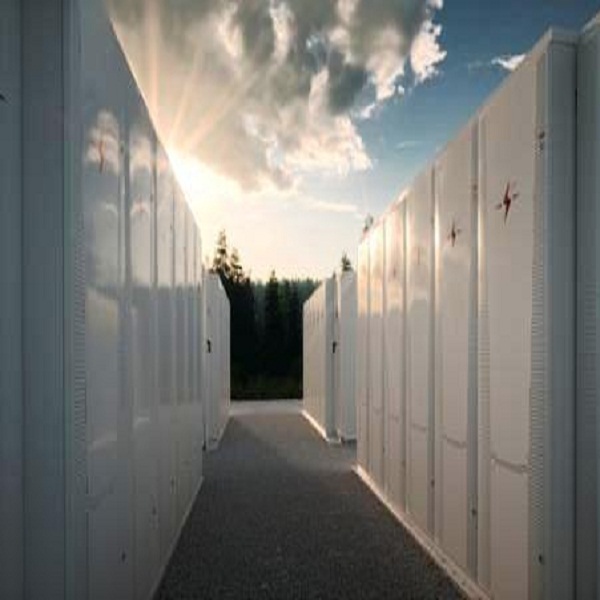The replacement of natural gas peaker plants by battery storage installations in now underway in California as part of the state’s commitment to a renewable energy future. Southern California Edison (SCE) signed contracts in May 2020 for 750 megawatts from 7 storage projects to be online by August 2021.
In November 2019, California regulators had called for the development of 3.3 gigawatts in system storage in California. The 2020 SCE effort is one manifestation.
A typical new storage install is Strata Solar building a 100 megawatt/400 megawatt hour lithium battery system in Oxnard for SCE that should be online in early 2021 to supplant a planned 262 MW gas peaker plant.
Storage systems have a few notable characteristics. First, they can be sited, licensed and built in a year or less compared to the multi-year planning and regulatory agonies of new fossil fuel plant construction. Second, they have zero on site fuel costs, and if charged from a renewable grid they have zero greenhouse gas (GHG) or any other emissions. Third,as system storage resources, they can be operating separately from renewable energy generation. Fourth, they can be sited to take advantage of existing transmission lines constructed to serve now decommissioned fossil fuel power plants with their robust transmission lines and substations. Given requisite control software, gird storage system can easily provide needed peaking and voltage and frequency balancing services.
It’s often been remarked that the transformation to a renewable energy system does not require construction of the fossil fuel type large scale transmission and distribution grid. But it’s now also clear that the existing robust transmission lines and system of distribution feeds can be creatively employed to speed up and facilitate the movement for 100% renewable and storage energy systems grid.
To gain the needed system storage capacity, the requisite number of storage megawatts hour capacity can be optimized and distributed in the grid system using existing transmission lines as a guide and as a ready made source for interconnection in almost plug and play fashion using intelligent software and control systems table to respond to fluctuating grid conditions and needs.
Planning for rapid transformation to a 100% renewable grid means planning to address a combination of increased electric demand, for example, for charging many millions of electric vehicles also servings as grid connected batteries. This means designing effective system storage to replace peaking plants and employ Vehicle to Gird (VTG) and Vehicle to Home (VTH) charging ports and control software.
A comprehensive plan for 100% renewables upgrades grid transmission, substations, feeders as required to support both system large scale renewable generation plants and storage as well as distributed generation and distributed storage all over the grid as well as the growth of large numbers of distributed micro grids with their own storage and renewable generation resources. Optimization of solar, for example, can employ new dual facing panels with high albedo ground covers taking advantage of indirect light and oriented West-East to have their output production closer to utility morning and afternoon peaks.
The distributed nature of the system for both energy and storage and the future genera spread of micro-grids makes the use of malware resistant control systems measuring local voltage and frequency possible and able to ignore harmful malware signals and maintain grid stability. If grid voltage and frequency is outside of acceptable levels, micro-grids can separate from the grid and come back in line very quickly using a mix of renewable generation and storage.
Use of Abandoned Fossil Fuel Plants as Storage and Interconnection Hubs
Retired fossil fuel plants are generally ideal locations for both large scale system storage and renewable interconnection, particularly for offshore wind and tidal power. For example, the retired Brayton Point coal plant in Fall River MA is now being redeveloped to provide offshore wind service for construction and maintenance. It is ideal location for wind transmission into the grid. This should be combined with large scale storage capacity that can provide hundreds of megawatts of stored wind energy during peak hours.
The optimized storage system is more than lithium batteries with 4MWH capacity per MW. This shroud be combined wth super-capacitors capable of responding very quickly and effectively to short term voltage and frequency fluctuations by sudden loads, for example, fast charging EVs during rush hour. Added shroud be fly wheels capable of quickly responding to power demand peaks as a kind storage peaking plants when current demands will both current peak needs as well as exceed the 4 hour capacity of batteries.
The effective and sometimes inspired and effective use of discarded materials is known as bricolage. Bricolage is typically applied to the ability of people to make do with what’s at hand usually applied to the creative struggles of the poor, of farmers and mechanics. The existing transmission and distribution network gives us an outstanding opportunity for 21st century bricolage to bring the 100% renewable grid into operation as quickly as possible.
We need to approach future storage possibilities and needs with open eyes. Opportunity is loudly knocking.
Source: Energycentral










